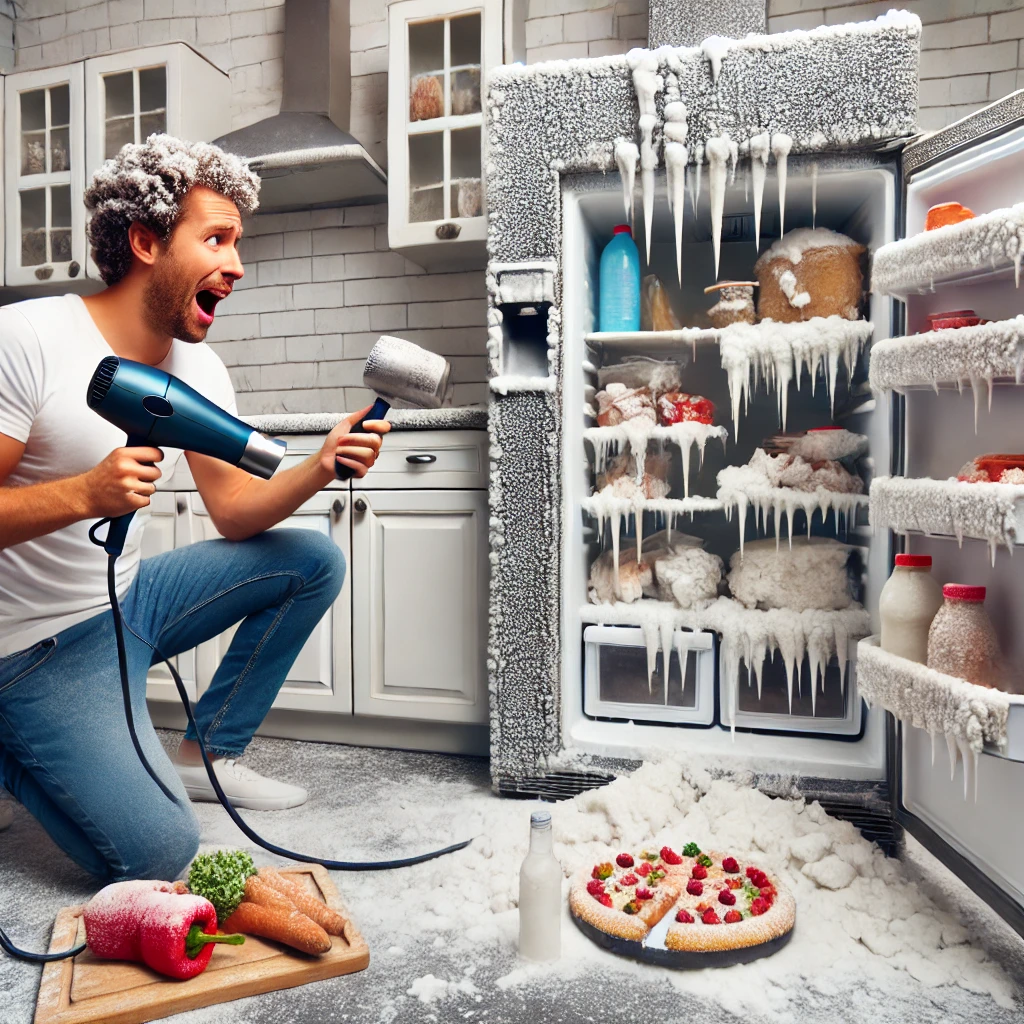When your refrigerator isn’t defrosting, it can lead to frost buildup, restricted airflow, and spoiled food. From my experience, this is the most common refrigerator problem I encounter. Fortunately, it’s manageable with the right knowledge. In this guide, we’ll walk you through the causes, solutions, and steps to prevent future defrost problems.
Why Is Your Refrigerator Not Defrosting?
Here are the top reasons behind defrost issues:
- Defrost Timer Failure
- The defrost timer signals when to activate the heater. If it’s stuck, your refrigerator won’t defrost.
- Solution: Replace the faulty defrost timer.
- Defrost Heater Malfunction
- The heater melts frost that accumulates over time. A malfunctioning heater causes ice buildup.
- Solution: Test with a multimeter. If the heater shows no continuity, replace it.
- Defrost Thermostat Issues
- The thermostat controls when the heater activates. If defective, the heater won’t turn on, resulting in ice accumulation.
- Solution: Test the thermostat for continuity and replace it if necessary.
- Clogged Drain Line
- A blocked drain prevents melted frost from draining properly, leading to frost buildup.
- Solution: Flush the drain line with hot water or clear it using a pipe cleaner.
- Control Board Problems
- A faulty control board may prevent the defrost cycle from starting.
- Solution: Inspect the board for damage and consider professional repair.
How to Fix a Refrigerator That Isn’t Defrosting
- Manual Defrost
- Unplug the refrigerator and allow it to defrost naturally for 24-48 hours. This offers a temporary solution.
- Check the Defrost Components
- Use a multimeter to test the timer, heater, and thermostat. Replace any part that shows no continuity.
- Clear the Drain Line
- Pour hot water through the drain to ensure there are no blockages.
- Replace the Control Board
- If none of the components are faulty, the control board may need replacement. Consult a professional if necessary.
Preventing Future Defrost Problems
- Keep the Drain Clean: Flush the drain line periodically to prevent clogs.
- Inspect Door Seals: Ensure door gaskets are tight to prevent warm air from entering.
- Routine Maintenance: Regularly inspect defrost components to catch issues early.
When to Call a Professional
If these steps don’t resolve the issue, it’s time to call a professional technician. At ZapFixers, we specialize in diagnosing and fixing defrost problems, ensuring your refrigerator runs smoothly.
Conclusion
A refrigerator that isn’t defrosting can lead to frost buildup, spoiled food, and rising energy costs. From my experience, this is the most frequent issue I encounter as a repair technician. With the right troubleshooting steps—whether it’s a faulty timer, clogged drain, or malfunctioning heater—you can solve this problem. And if things get tricky, ZapFixers is here to help!
